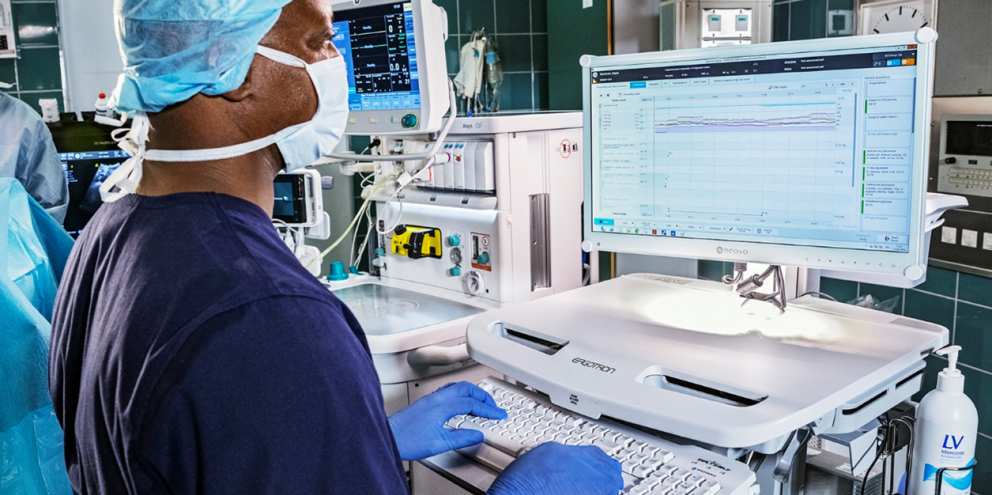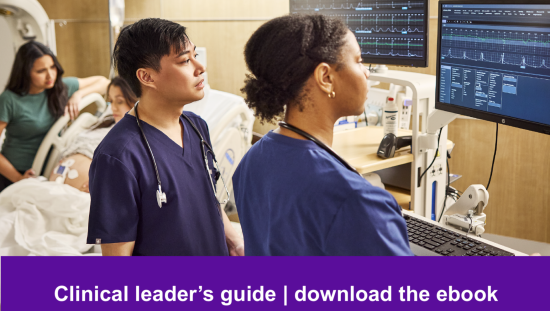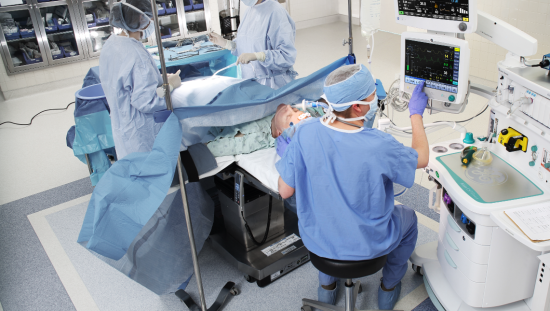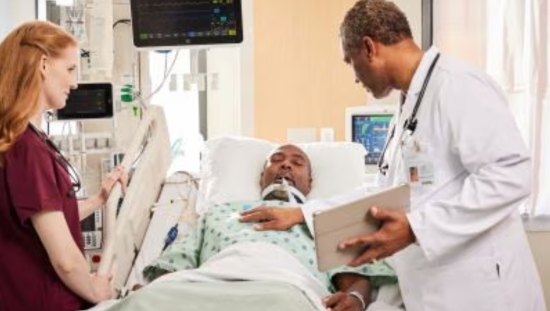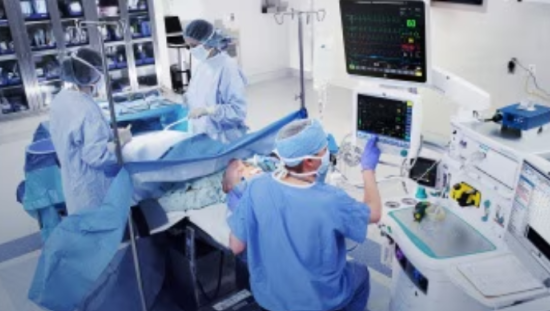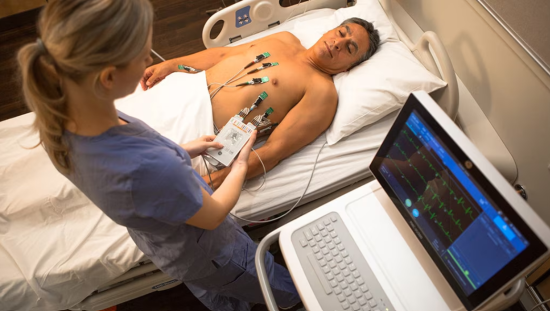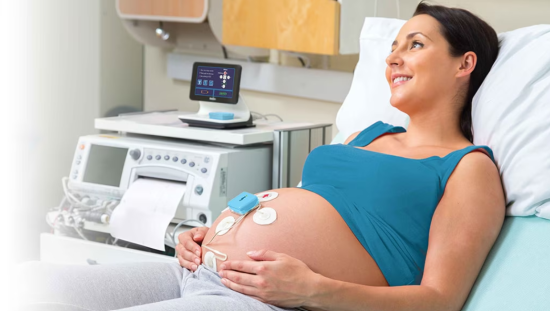To maximize patient care quality across the perioperative process, anesthesia teams can leverage a combination of continuous patient monitoring from intraoperative care through postoperative recovery, low flow* anesthesia, and lung protective ventilation strategies.
Part 1 of this series examined how low flow anesthesia may optimize patient care, improve environmental sustainability, and reduce costs. Part 2 looked at the ways lung protective ventilation strategies, including low tidal volume, PEEP, and driving pressure, may minimize the risk of postoperative pulmonary complications (PPCs).
This final installment focuses on how continuous intraoperative monitoring enables anesthesia providers to detect subtle signs of early deterioration, optimize patient care during surgery, as well as the role of technology as a catalyst for ensuring successful postoperative recovery.
Elevating intraoperative vigilance with continuous monitoring
While continuous patient monitoring is a common practice in ICUs,[2] new opportunities are being recognized to implement the tools into more areas of the hospital. These include telemetry, emergency departments, and general medical-surgical units.[3] In fact, continuous monitoring is demonstrating its effectiveness in surgical units when it comes to helping clinicians optimize patient care, reduce length of stay and enable personalized, patient-centric care.[4]
Specifically, the role of OR monitoring is evolving from reactive to proactive detection. Because subtle physiological changes in vital signs, notably respiratory rate,[5] often precede critical events, continuous patient monitoring can reduce intraoperative risks to enable safer postoperative recovery, avoid readmissions, and help ensure positive clinical outcomes.[6]
Expanding continuous monitoring from the OR to the PACU
A narrative review in the British Journal of Anesthesia found that continuously monitoring vital signs while patients are recovering from surgery “decreases the risk of intensive care unit admissions, rapid response calls, and in some instances, mortality.”[7]
During surgery, identifying changes to patient status quickly is important because of the 313 million surgeries performed annually around the world, 4.2 million people die within 30 days of surgery each year.[8] To address these challenges, hospitals can implement Enhanced Recovery After Surgery (ERAS) protocols. The benefits of ERAS protocols include accelerated recovery,[9] reduced PPCs, shorter length of stay, increased patient satisfaction, and driving economic advantages.[10]
ERAS elements include educating patients and family members as appropriate, pre-admission optimization, minimal fasting, early postoperative nutrition and mobility, and return to normal activities.[11] Implementing patient monitoring can optimize ERAS pathways.[12]
In postoperative recovery, the American Society of Anesthesiologists (ASA) standards recommend that patients are evaluated continually in PACU. “Particular attention should be given to monitoring oxygenation, ventilation, circulation, level of consciousness, and temperature. During recovery from all anesthetics, a quantitative method of assessing oxygenation such as pulse oximetry shall be employed in the initial phase of recovery.”[13]
The benefits of interoperative neuromuscular transmission monitoring
Continuous vital sign surveillance may improve patient care, help to avoid ICU admissions,[14] and ease the strain on clinician workloads. Intraoperative neuromuscular transmission monitoring (NMT) monitoring is used to quantitatively measure the effect of neuromuscular blocking agents. The ASA and the European Society of Anaesthesiologists (ESAIC) have each published guidelines that recommend anesthesia providers implement intraoperative quantitative neuromuscular monitoring.[15,16]
According to the Anesthesia Patient Safety Foundation (APSF): “Quantitative neuromuscular monitoring is the only reliable means of confirming adequate recovery from neuromuscular blockade and avoiding postoperative residual weakness. Anesthesiologists must familiarize themselves with new monitoring technologies to reduce complications.”[17]
NMT, for example, may help avoid postoperative complications and decrease postoperative paralysis, which causes extended stays in the PACU.[18] Level of consciousness monitoring may be associated with a faster emergence from anesthesia.[19]
Additional technologies include wireless and wearable continuous patient monitoring, which may result in improved patient outcomes, reduced strain on healthcare resources, and earlier hospital discharge.[20]
Technology as a catalyst to better postoperative recovery and outcomes
Modern technologies enable anesthesia providers to extract data from the OR and postoperative recovery settings, analyze adherence to protocols, monitor unplanned incidents, and uncover opportunities to drive greater efficiencies in overall patient care.
For Quantitative NMT, such as electromyography, “the main advantage is that the immobilization of the arm is not mandatory, and therefore this technique can suit all types of surgery as free
movement and muscle immobility are not required”.[21] As part of GE HealthCare’s Adequacy of Anesthesia (ASA) concept, the NMT module automates quantitative measurements of patient response to stimulus to assess the level of blockade throughout the surgery and identify risks or deterioration early. With that information, anesthesia providers can take appropriate action to help ensure optimal postoperative recovery. GE HealthCare’s Adequacy of Anesthesia concept also includes additional measurements of depth of anesthesia to inform clinical decision making so providers can focus on optimizing patient care with a focus on quality and safety.
Sources:
[1] Anesthesia, surgery, and challenges in postoperative recovery, The Lancet https://www.thelancet.com/journals/lancet/article/PIIS0140-6736(03)14966-5/abstract
[2] Clinical requirements of future patient monitoring in the intensive care unit: qualitative study, JMIR Medical Informatics
https://medinform.jmir.org/2019/2/e13064/
[3] How continuous monitoring improves patient care in the medical-surgical ward, GE HealthCare
[4] Scaling Post-Acute Care: Opportunities & Obstacles, GE HealthCare
https://clinicalview.gehealthcare.com/market-report/market-report-scaling-post-acute-care-opportunities-obstacles
[5] Respiratory rate: the forgotten vial sign—make it count! The Joint Commission
https://www.jointcommissionjournal.com/article/S1553-7250(18)30040-0/abstract
[6] Impact of remote patient monitoring systems on nursing time, healthcare providers, and patient satisfaction in general wards, Cureus
https://www.cureus.com/articles/255710-impact-of-remote-patient-monitoring-systems-on-nursing-time-healthcare-providers-and-patient-satisfaction-in-general-wards#!/
[7] Continuous vital sign monitoring of patients recovering from surgery on general wards: a narrative review, British Journal of Anesthesiology
https://www.bjanaesthesia.org/article/S0007-0912(24)00709-8/fulltext
[8] Global burden of postoperative death, The Lancet https://www.thelancet.com/journals/lancet/article/PIIS0140-6736(18)33139-8/fulltext
[9] Impact of “Enhanced Recovery After Surgery” (ERAS) protocols vs. traditional perioperative care on patient outcomes after colorectal surgery: a systematic review, Patient Safety in Surgery
https://pssjournal.biomedcentral.com/articles/10.1186/s13037-024-00425-9
[10] Revolutionizing surgical care: the power of Enhanced Recovery After Surgery (ERAS), Cureus
https://pmc.ncbi.nlm.nih.gov/articles/PMC10646429/
[11] Enhanced Recovery After Surgery overview, American Association of Nurse Anesthesiology
https://www.aana.com/practice/clinical-practice/clinical-practice-resources/enhanced-recovery-after-surgery/
[12] 3 ways patient monitoring optimizes ERAS pathways, GE HealthCare
https://clinicalview.gehealthcare.com/article/3-ways-patient-monitoring-optimizes-eras-pathways
[13] Standards for postanesthesia care, American Society of Anesthesiologists
https://www.asahq.org/standards-and-practice-parameters/standards-for-postanesthesia-care
[14] Effect of continuous wireless vital sign monitoring on unplanned ICU admissions and rapid response team calls: a before-and-after study, British Journal of Ansesthesia
https://www.sciencedirect.com/science/article/pii/S0007091222000733
[15] Standards for postanesthesia care, American Society of Anesthesiologists
https://www.asahq.org/standards-and-practice-parameters/standards-for-postanesthesia-care
[16] Perioperative management of neuromuscular blockade: a guideline from the European Society of Anaesthesiology and Intensive Care, European Journal of Anaesthesiology
https://journals.lww.com/ejanaesthesiology/fulltext/2023/02000/peri_operative_management_of_neuromuscular.3.aspx
[17] Advancements in quantitative neuromuscular monitoring, Anesthesia Patient Safety Foundation
https://www.apsf.org/article/advancements-in-quantitative-neuromuscular-monitoring/
[18] Respiratory complications in the postanesthesia care unit: A review of pathophysiological mechanisms, Canadian Journal of Respiratory Therapy
https://cjrt.ca/article/81562-respiratory-complications-in-the-postanesthesia-care-unit-a-review-of-pathophysiological-mechanisms
[19] Spectral entropy monitoring accelerates the emergence from sevoflurane anesthesia in thoracic surgery: a randomized controlled trial, Journal of Clinical Medicine
https://www.mdpi.com/2077-0383/11/6/1631
[20] Wearable devices for patient monitoring in the early postoperative period: a literature review, mHealth
https://mhealth.amegroups.org/article/view/61893/html
[21] Intraoperative monitoring of neuromuscular blockade, Life
https://www.mdpi.com/2075-1729/13/5/1184
*Refer to the anesthetic agent labeling for information regarding
indications for use, warnings, and other relevant clinical information specific to that anesthetic agent. Any decisions regarding selection of anesthetic agent and flow rate should be made at the discretion of the clinician and in their medical judgment based on available information.
Nothing in this material should be used to diagnose or treat any disease or condition. Readers must consult a healthcare professional.
GE is a trademark of General Electric Company used under trademark license.
JB34670XX

